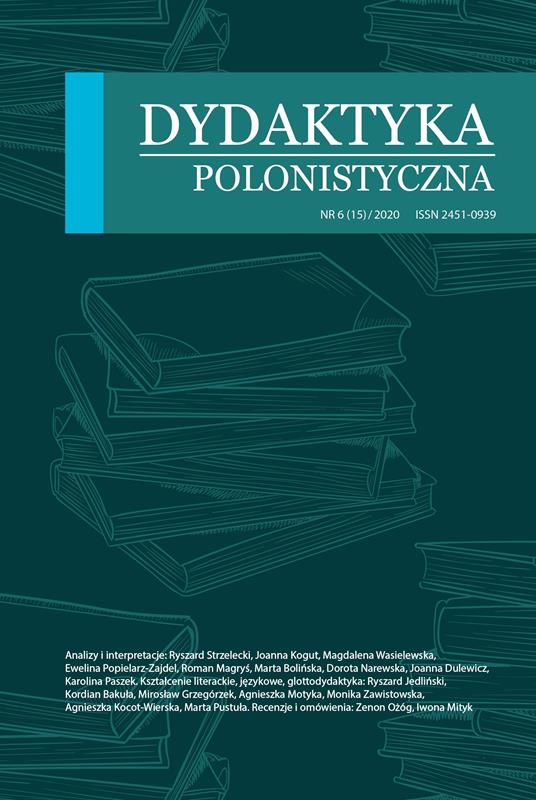Egodokumenty mistyczek polskich w świetle teorii tekstu
DOI:
https://doi.org/10.15584/dyd.pol.15.2020.1Słowa kluczowe:
ego-document, text, spiritual journal, text consistency, mystic, dialogue, transcendent peopleAbstrakt
The article defines the methods of analyzing ego-documents of contemporary Polish ”femalemystics”, based on the tools developed in the theory of the text. This type of research approach helps to establish ”how” the text is structured as opposed to ”what” is its semantic content and obscures it. Well, both the personality of the „female-mystics” and the course of their relations with transcendent persons are imprinted more in the structure of the text than in its content. The accounts deserve attention, as we only reflect on documents that are ”mystical” dialogues. These forms can pose the most difficulties for researchers (the diaries of Maria Faustyna Kowalska and Alicja Lenczewska were used for exemplification).Their coherence is problematic – the key distinguishing feature of the text – and its conditions:the existence of a frame, metatextual and isotopic factors, relations: mind-body, personal criteria in the phrases: ”to someone” and ”for someone” and performative properties; the linguistic view of the world (LVW) of both the author and the recipient of the text plays a special role in research strategies. In investigating the structure of the text, it is also important to capture the limit of expressing the spiritual reality. Writing ”mystical” texts is based on constant struggles, an inevitable and risky compromise between the temporal meaning and the ultimate truth, which is still unavailable for the ”mystic” or turns out to be impossible to articulate. There is a third situation where articulation is not only impossible but pointless, and it concerns people who have reached the end and experience themselves in God.Pobrania
Opublikowane
2020-12-15
Jak cytować
Strzelecki, R. (2020). Egodokumenty mistyczek polskich w świetle teorii tekstu. Dydaktyka Polonistyczna, 15(6), 7–30. https://doi.org/10.15584/dyd.pol.15.2020.1
Numer
Dział
ANALIZY I INTERPRETACJE


